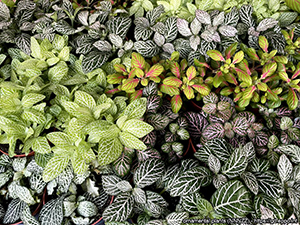
EPPO extrapolation for minor uses
What are minor uses?
Minor uses are those uses of plant protection products (defined in relation to crops and pests) in which either the crop is not widely grown at a national level (minor crop), or the pest is of limited importance on a major crop. It should be noted that a minor use in one country may be a major use in another country, and it is for each country to define what its minor uses are.
The availability of plant protection products to growers of minor crops is becoming increasingly limited. This is partly because PPP companies find it difficult to justify product development costs when there is limited financial return. The requirement to generate a considerable amount of data makes the authorization process resource intensive. However, minor crops are of substantial economic importance in many countries. For minor use authorization, other possibilities for determining the efficacy and crop safety of a PPP than those based on the amount of data normally required can be considered. One strategy is to make greater use of data extrapolation for efficacy and crop safety. Extrapolation from indicator crops to minor crops has been proposed as an option to facilitate the registration process, while ensuring that data is still sufficient to demonstrate the effectiveness and crop safety of the plant protection products studied.
NEW



EPPO and the European Minor Uses Coordination Facility
 Since 2003, EPPO has been working on minor uses by organizing conferences and workshops on this topic, by developing Standards about the principles of efficacy evaluation for minor uses and by preparing extrapolation tables. In 2015, at the initiative of the European Union and the governments of France, Germany and the Netherlands, the European Minor Uses the Facility (MUCF) was created and it was agreed that it should be hosted by EPPO in Paris. MUCF specifically address the issue of minor uses for Europe.
Since 2003, EPPO has been working on minor uses by organizing conferences and workshops on this topic, by developing Standards about the principles of efficacy evaluation for minor uses and by preparing extrapolation tables. In 2015, at the initiative of the European Union and the governments of France, Germany and the Netherlands, the European Minor Uses the Facility (MUCF) was created and it was agreed that it should be hosted by EPPO in Paris. MUCF specifically address the issue of minor uses for Europe.
EPPO Standards related to minor uses
In 2003, EPPO published a Standard PP 1/224 Principles of efficacy evaluation for minor uses to help users determine the requirements for efficacy evaluation for minor uses of plant protection products in a registration procedure. In 2007, another Standard PP 1/257 Efficacy and crop safety extrapolations for minor uses was prepared to provide further guidance to regulatory authorities and applicants in the context of the registration of plant protection products for minor uses, and also to provide detailed lists of acceptable extrapolations.
- PP 1/224 – Principles of efficacy evaluation for minor uses
- PP 1/257 – Efficacy and crop safety extrapolations for minor uses.
The lastest versions of the above standards can be accessed from the EPPO database on PP1 Standards ![]()
Lists of acceptable extrapolations
EPPO extrapolation tables (pdf versions) have been developed since 2007 to be used in conjunction with EPPO Standard PP 1/257 Efficacy and crop safety extrapolations for minor uses. The 82 published tables provided detailed lists of acceptable extrapolations, organized by crop groups or pest groups, for regulatory authorities and applicants in the context of the registration of plant protection products for minor uses. In 2019 EPPO decided to create a searchable database to retrieve the extrapolation possibilities in the tables and make the information more accessible. All extrapolations should be viewed on a case-by-case basis and expert judgment should always be applied when employing these tables. EPPO is not liable for the information provided in the database.
